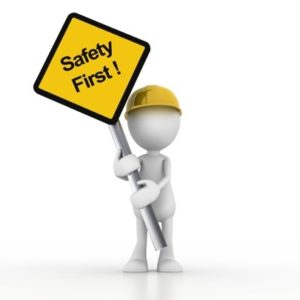 Hope you all have read our very first article in the Knowledge Corner “Current material handling practices and challenges”. Were too busy and did not get a chance to go through it? Don’t worry, as it will always be there on our website and you can go visit it anytime. As the name suggests, the write-up focused on the various material handling technics practiced in the manufacturing industries and the challenges faced by these companies on account of such obsolete practices. We also saw that manual labor, while being an integral part of material handling, is also a major challenge in the process. Continuing with the topic, let us now emphasize on the Labor Issues in material handling. We will try to touch base on the most commonly faced issues.
Hope you all have read our very first article in the Knowledge Corner “Current material handling practices and challenges”. Were too busy and did not get a chance to go through it? Don’t worry, as it will always be there on our website and you can go visit it anytime. As the name suggests, the write-up focused on the various material handling technics practiced in the manufacturing industries and the challenges faced by these companies on account of such obsolete practices. We also saw that manual labor, while being an integral part of material handling, is also a major challenge in the process. Continuing with the topic, let us now emphasize on the Labor Issues in material handling. We will try to touch base on the most commonly faced issues.
- Skilled Labor: Finding and hiring skilled labor appropriate for a particular job tops the list of issues faced by material handling and supply chain executives. Because of the deficit between the demand and supply of such skilled labor, retaining them becomes even more difficult than ever.
- Training the Workers: In case of inability to find skilled labor, the shop floor workers need to be trained to acquire a particular skill – say operating a forklift or a small industrial vehicle used to transport material within the premises. Even though the workers are trained for one particular job, the introduction of new technologies every now and then makes it imperative for the workers to undergo numerous trainings time and again to learn these new technics. This incurs an additional expenditure on the companies.
- Labor Cost: The cost of material handling is an important factor to be considered while calculating the total cost of manufacturing. Since there is a shortage of skilled labor, their wages are also comparatively higher, increasing the labor cost, which is an overhead. Studies suggest that a forklift operator accounts for 96% of the operating cost over the life of the actual forklift. You can imagine the savings that can be achieved by replacing such forklifts by automated solutions.
-
 Labor Safety: Shop floor safety is always a huge concern whenever there is human interference involved. For example, driving is not controlled in manually operated forklifts resulting in serious injuries or even fatal accidents. Statistics show that 25% of shop floor transport injuries are a result of forklift accidents. Apart from forklifts, injuries may also occur because of workers getting struck by falling material, getting run over by industrial vehicles or falling from high platforms.
Labor Safety: Shop floor safety is always a huge concern whenever there is human interference involved. For example, driving is not controlled in manually operated forklifts resulting in serious injuries or even fatal accidents. Statistics show that 25% of shop floor transport injuries are a result of forklift accidents. Apart from forklifts, injuries may also occur because of workers getting struck by falling material, getting run over by industrial vehicles or falling from high platforms.
Labor safety is of utmost importance to all the companies. In view of that, the workers have to be provided with safety trainings and equipment, medical costs, insurance which when added to the actual labor cost consequently increases the manufacturing cost.
- Breaks: We would all agree that no human can work continuously without taking a break. Even in an 8-hour shift, a worker takes 3-4 breaks on an average including tea break, lunch break and of course bathroom breaks. Believe it or not, some companies also have policies regarding restroom breaks to maintain decorum. Additionally, workers also need at least 1 holiday in a week for rest and rejuvenation. Although most companies operate in shifts, it is not possible to operate 24X7 because of all the reasons mentioned above.
- Low Efficiency: It is highly ambitious to expect the same efficiency from a worker throughout the day. There are many reasons, which are responsible for lowering the efficiency of a worker. For example, he may be sick or tired or mentally preoccupied in something else. We all can relate to this as we go through it at some point or the other. Humans also being prone to oversight or inaccuracy can cause loss in efficiency and thus affect the final output.
- Loss in Productivity: In today’s fast world, the companies also need a faster response time to fulfill the customer demand of lower manufacturing costs. But because of the constraints on labor availability and higher daily wages, the cost of material handling increases manifolds. Delays or downtime caused by labor issues also curb the production. These factors consequently increase the production cost, in turn hampering the productivity.
The above highlighted issues lead us to infer that manual labor increases the overall cost of material handling in manufacturing industries. Today, when material handling is considered as a potential area for cost reduction, such high labor costs are not at all desirable. It is high time autonomous solutions should be taken into account for all handling and transportation needs. This will not only reduce costs, but also improve efficiency and productivity, which will definitely benefit the industries.
What do you think? Leave your thoughts, ideas, questions, comments in our comments section and we will get back to you.




6 Comments
Justina
I enjoy the article
Colby
Thanks, it is very informative
Daniela
It works really well for me
http://Cenceme.Org/10-best-Screen-Recorder-software-for-windows/
Thank you for the great article
dating websites free -akismet "leave a reply" "comments"
Great blog you have got here.. It’s hard to find high quality writing like yours
these days. I really appreciate individuals like you!
Take care!!
https://datingjet.com
Thanks for some other magnificent article.
Thhe place else could anyone get thqt kind of information in such an idesl way of writing?
I’ve a presentation subsequent week, and I’m at the search for such
info.